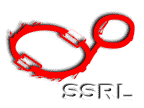
Solution x-ray scattering is used to obtain structural parameters of particles of colloidal dimensions and allows determination of three dimentional structure at low resolution. It can be used to verify crystal structure of proteins since solution scattering curves can be calculated from atomic coordinates. It has been widely used in studies of macromolecular assemblies, virus particles and proteins. Time-resolved experiments are often performed using an intense synchrotron x-ray beam. Protein folding is a new class of subject that makes good use of solution x-ray scatttering in learning compactness of a protein as it folds into a native structure. Recent developments in determining low-resolution structure using solution scattering will be discussed in the morning session, and some practical aspects of solution scattering (experimental design, introduction to data collection and interpretation) will be covered in the afternoon sessions.
The workshop also covers new developments in interfacing solution scattering and small-angle diffraction to cryo-electron microscopy and macromolecular crystallography. Solution x-ray scattering amplitudes have been used to improve electron diffraction amplitudes, and more recently to determine the contrast transfer function in cryo-EM image reconstruction. A low-resolution model deduced from solution scattering has been used as an initial model for obtaining crystallographic phases. Single crystal diffraction data in the range of 10-1000 A has recently been successfully used to help solve the phase problem in virus crystallography. The data in this resolution range resulted in visualizing structures that are not seen when only high-resolution data are used. Advanced ab initio phasing techniques in macromolecular crystallography require accurately measured low-resolution diffraction data. Experts in handling very low-resolution data are invited to share their experience.